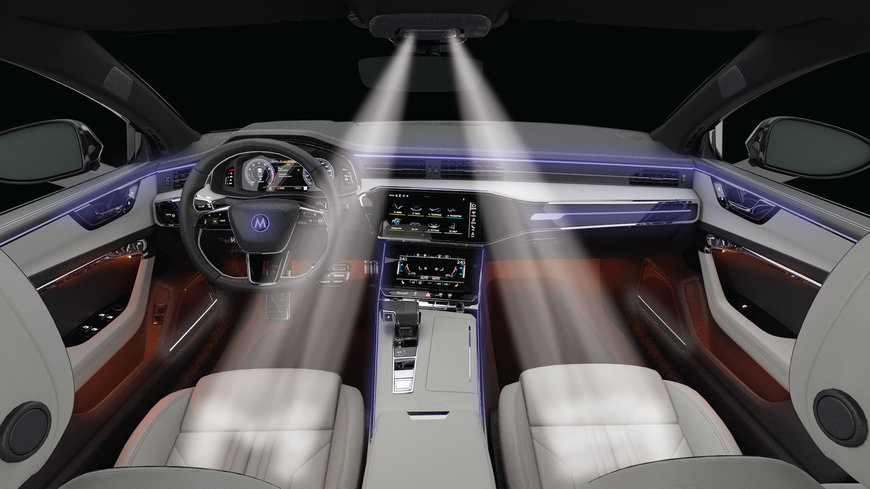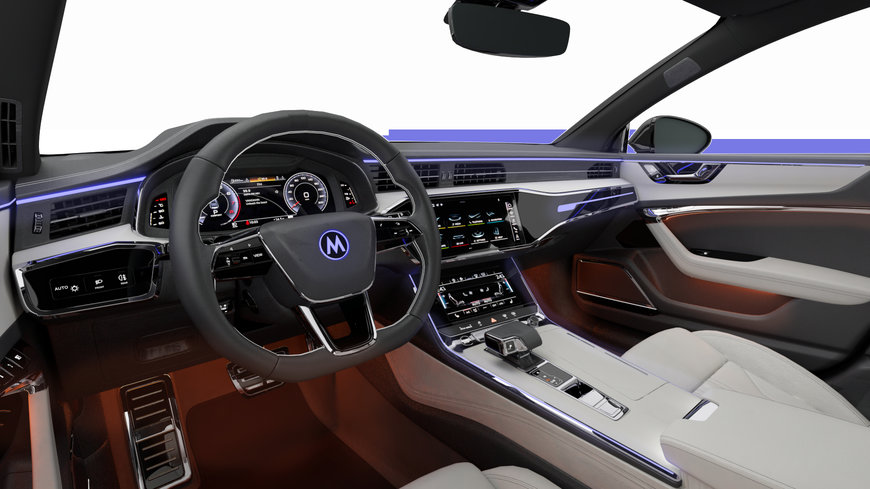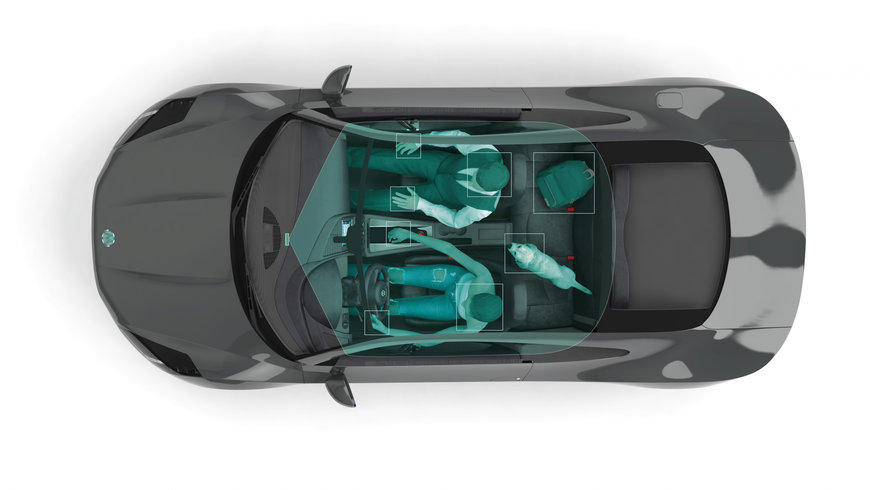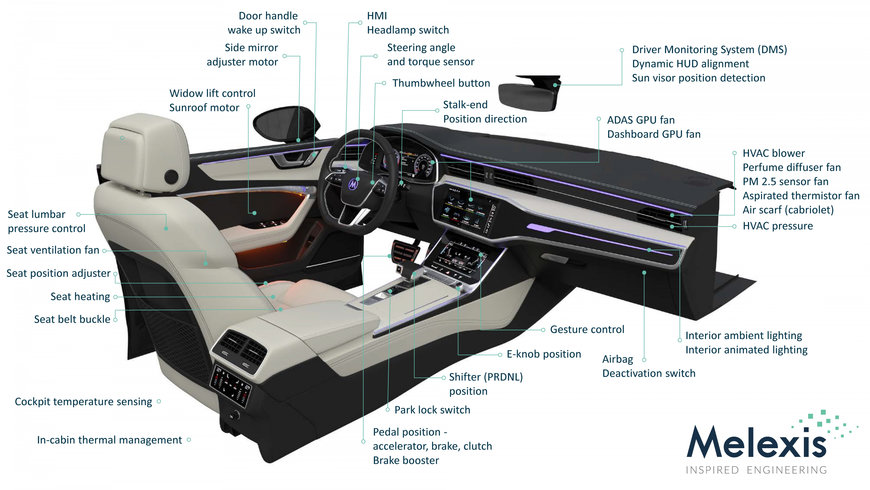www.auto-innovations.net
13
'22
Written on Modified on
Melexis News
Implementing Greater Intelligence into Vehicle Cabins
Ever since the automobile industry’s inception over a century ago, car manufacturers have been looking for ways to differentiate their models from those of the competition. For a large proportion of the decades that have followed, this differentiation was mainly based on the development of vehicles that delivered better performance or road handling.

By Cédric Deléglise, Technical Content Marketeer, Melexis.
In more recent times that has changed, however. Now, customers are more interested in higher degrees of comfort and a better overall user experience than what a vehicle’s top speed or horsepower figures are. The interiors of modern cars are where much of the enhancement work needs to be made. The following article is intended to highlight exactly how this is currently taking place.
Advanced Lighting Implementations
The importance of internal lighting is finally being acknowledged by car manufacturers - both from a safety and a comfort standpoint. The ability to alter the surrounding environment so that it is better matched with the vehicle occupant’s preference is something of a game changer, as it allows personalization without the need for any hardware customization. This can also be tuned to suit their mood at any given time.
There is the prospect of it going way beyond that though. As higher levels of autonomy start to be incorporated, the concentration of vehicles’ drivers on the road ahead may lapse. Smart lighting will consequently have a vital part to play in alerting them to any imminent danger. Under such circumstances, the vehicle could turn the interior illumination red to gain the driver’s attention, so that they are ready to respond. It could, likewise, notify any passengers in a stationary vehicle not to open their door if a cyclist was just about to ride past, by lighting up the trim. Animated lighting functionality could be combined with the interior illumination to add even greater emphasis to the seriousness of a situation.
Driver Monitoring
Active real-time driver monitoring system (DMS) technology will be another key aspect via which intelligence may be brought to vehicle cockpits in the future. Here, sophisticated sensor arrangements, probably leveraging a time-of-flight (ToF) mechanism, will be able track where the driver’s attention is directed and that both their hands are on the wheel. If their focus has been in some way distracted or they are showing signs of fatigue, and a critical situation arises for which they are not able to react quickly enough, then the vehicle can step in and take any necessary actions.

Using ToF, accurate three-dimensional (3D) renderings can rapidly be derived, and the data made use of. This technology can also be of value in occupant classification. It enables the vehicle to determine whether there are children or adults in the passenger seats. The airbag deployment mechanism can then be adjusted accordingly. As this form of imaging relies on infrared (IR) rather than visible light, variations in the ambient conditions will not impact on the operational performance.
Greater Control Responsiveness
Intelligent vehicle cockpits will make a lot more use of x-by-wire technology - with the steering wheel, plus brake, throttle, and accelerator pedals no longer dependent on mechanical arrangements that are bulky and have certain reliability issues associated with them. Instead, high accuracy position sensors will be able to determine movement of these items (both linearly and rotationally) and react appropriately.
Gesture Recognition
One of the best ways to avoid driver distraction is to make the human machine interfaces (HMIs) that they must manipulate as straightforward and intuitive as possible. If control can be undertaken through simple hand gestures (rather than having to operate a touch screen, push buttons, turn knobs, etc.), then the driver will only have to divert their attention for the briefest of periods. With the support of suitable imaging technology, numerous tasks could be carried out through gesture recognition. This could have a significant influence on reducing the risk of car accidents occurring and does not suffer from the background noise issues associated with voice control.
According to a report published by analyst firm Global Market Insights, the automotive gesture recognition system business will be worth over 2.5 billion by 2026 - showing the uptake is already starting to get underway. There is scope for this to be used to fulfill a wide variety of different functions. In relation to a vehicle’s infotainment system, simple hand movements will enable the user to browse available content, then select an album or song that they want to play. Different radio stations may be scrolled through and picked, and the volume of the speakers raised/lowered as required. Regarding a navigation system, a pinching motion would allow zooming in to a particular point on a map. When making phone calls, the list of contacts could be accessed then a number rung without interrupting the driver’s concentration. Doors could automatically be opened through gesture recognition as the driver approached their vehicle. This could be of real value to the disabled or those carrying heavy items.

More Proficient Climate Control
Keeping the vehicle interior at an optimal temperature is another function that is easily addressed through the implementation of advanced sensor technology. This is becoming increasingly important as an ever-bigger percentage of people migrate from internal combustion engine cars to electric vehicles (EVs). Obviously EVs cannot utilize engine generated heat but are instead dependent on complex thermal management systems. The climate control in EVs must be as efficient as possible, as otherwise precious battery power (that could instead be helping to extend the vehicle’s range) is going to be wasted. Thermal imaging data can be acquired that will show the temperature of each vehicle occupant. This can be used to set the climate control in each zone of the cabin to the appropriate level.
Enhanced Seating
Facing longer commutes, many of us will be spending more time in our cars. Providing vehicle occupants with seating that is both comfortable and functional is another key element of future vehicles’ interior layouts. Novel design concepts and use of new materials will lead to improvements in these seats’ look and feel, bringing them more in line with those found in the home. The technology now available means that it is possible to make certain that seats are positioned to exactly meet each occupant’s preferences, even before they enter the vehicle. Fans integrated directly into these seats will translate into more effective cooling, while massaging mechanisms will provide relief from lumbar pain (and are thus likely to prove invaluable during longer journeys). Alongside all this, sophisticated seat belt detection will be pivotal from the standpoint of occupant safety.
The Supporting Technology
Via its continuously expanding portfolio of advanced automotive-grade semiconductor solutions, Melexis is helping to make the intelligent cockpit concept that has just been outlined into a reality. Its ToF 3D camera ICs are highly optimized for DMS activities, offering both the necessary sunlight robustness and resolution levels. This ToF hardware is also applicable to in-air gesture-based control.
The company’s high accuracy magnetic positioning sensors are transforming essential driving activities - providing the x-by-wire functionality needed for streamlined, convenient, and responsive operation. Likewise, the magnetic and pressure sensors it offers, alongside motor and fan driver ICs, are increasing comfort and personalization in-car seating. Seat belt detection systems, based on their magnetic sensing devices, meaning that occupants are always securely seated. In addition, Melexis IR sensor arrays enable contactless temperature measurements to be taken, so that climate control systems are used in the most operationally effective and energy-efficient manner.

Conclusion
The vehicles that are being introduced onto the market today are integrating a much broader spectrum of functions than would have even been thought achievable in the past. As the global automotive sector moves further into the realm of autonomous operation, the role of the driver will gradually be negated - with all vehicle occupants eventually being categorized as passengers. By embracing new technological innovations, it will be possible to transform vehicle interiors - making them better aligned with the new set of expectations that these occupants will have.
The high-performance sensor technology described above, and the plethora of applications that are certain to benefit from it, underlines the fact that there is huge potential for enriching vehicles’ interior designs. They will thus be able to accommodate new types of HMI that improve the interaction between occupants and the vehicle itself, as well as to conduct real-time monitoring of occupants to ensure they are comfortable and safe. The engineering staff at Melexis are constantly looking for ingenious ways via which they can help manufacturers to bring a greater degree of intelligence to the cockpits of their cars. In the years to come, there will be even more progression here.
www.melexis.com

